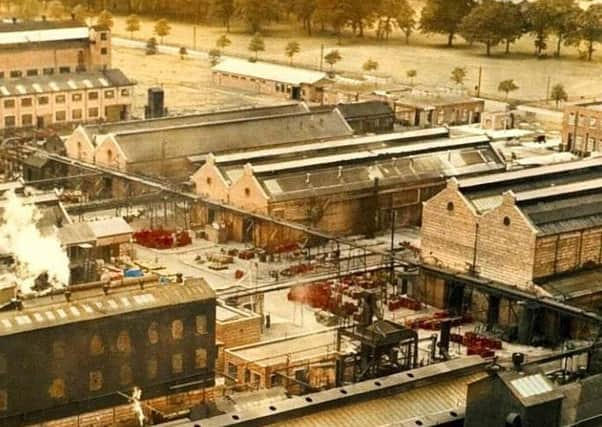It was a lab job ‘to dye for’ during the summer break!


I was described as a ‘‘lab assistant’’ and my pals said: “You’ll be washing test tubes and bottles all day, every day”.
They couldn’t have been more wrong because I was sent to the Divisional Engineering Department (DED) and worked all over the plant doing different odd jobs and learning a lot about the manufacture of dyestuffs and medicinals.
Advertisement
Hide AdAdvertisement
Hide AdLike most Falkirk folk I already knew quite a lot about “the Dyes” because it was a major part of the huge ICI operation and dated back to October 1919 when James Morton opened Scottish Dyes on the 80 acre site, part of the Marquess of Zetland’s former estate.
Morton, a Scot with a family background in the weaving trade, had begun manufacturing fabrics coloured by new synthetic dyes in Carlisle, which offered a virtual ‘‘no fade’’ guarantee.
The outbreak of war in 1914 cut off supplies of the German-made dyes and that led to the brave decision to manufacture the dyes himself which, in turn, led to the Grangemouth venture.
There was a huge demand from the textile industries and the new plant went from strength to strength.
Advertisement
Hide AdAdvertisement
Hide AdIn 1926 the firm became part of the British Dyestuffs Corporation which helped form Imperial Chemicals Industry two years later.
When I arrived on site in 1961 everything was green!
The buildings were green, the drums and tanks were green and many of the man who worked there were green as well.
To be precise, they were Monastral Green which was the star product at the time and one of the firm’s most valuable lines. Some of the men told me that years before the place had been blue for a similar reason! I wasn’t there long before I was carrying granules of dye home in my clothes so that my poor mother wondered why all the family shirts and underwear began to take on a pale green colour.
I was reminded of all of this a week or so ago when I met up with John Blackie, chemical engineer and former site manager at Grangemouth.
Advertisement
Hide AdAdvertisement
Hide AdHe gave me a copy of his excellent new book called ‘‘The Dyes’’ which has just been published to mark the 100th anniversary.
With three decades of experience in the industry and a goodly chunk of it at Grangemouth, John is ideally placed to tell this story and he does so by mixing history with chemistry along with lots of material on the people who made up the ‘‘dyes’’ community as it moved through its many forms and names. From 1993 ICI was ‘‘demerged’’ and subdivided and we later had Zeneca, Syngenta, Avecia, Kem Fine, Fujifilm, Calachem and others. The huge site gradually changed and most of the old sheds came down to be replaced by the up-to-date facilities and equipment required to produce the new products like agrichemicals, dyes for printer inks, advanced pharmaceuticals and so much more.
‘‘The Dyes’’ all 500 pages of it, is available from [email protected] or Grangemouth Heritage Trust which will receive all the profits from the publication.
At £12 it is a bargain and I think that former employees especially will find it a fascinating stroll down memory lane.
But it is much more than a history of people and place.
It is a personal journey ranging across the past century, full of fascinating anecdotes and much wisdom on life in general and industrial life in particular.